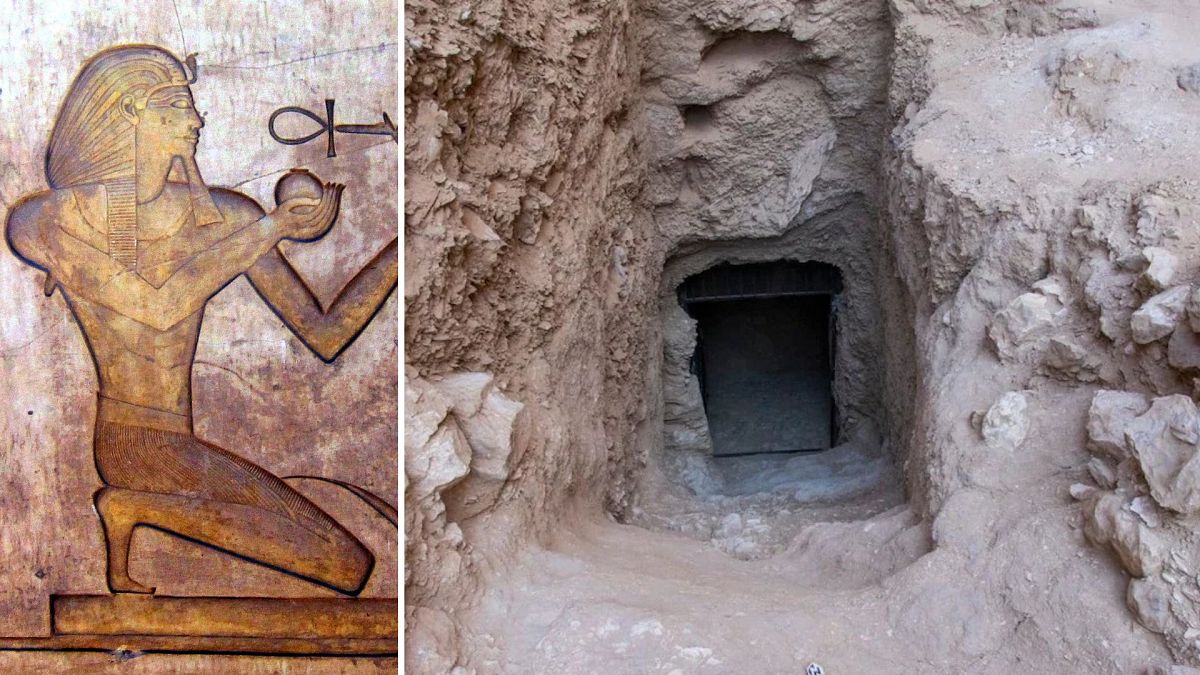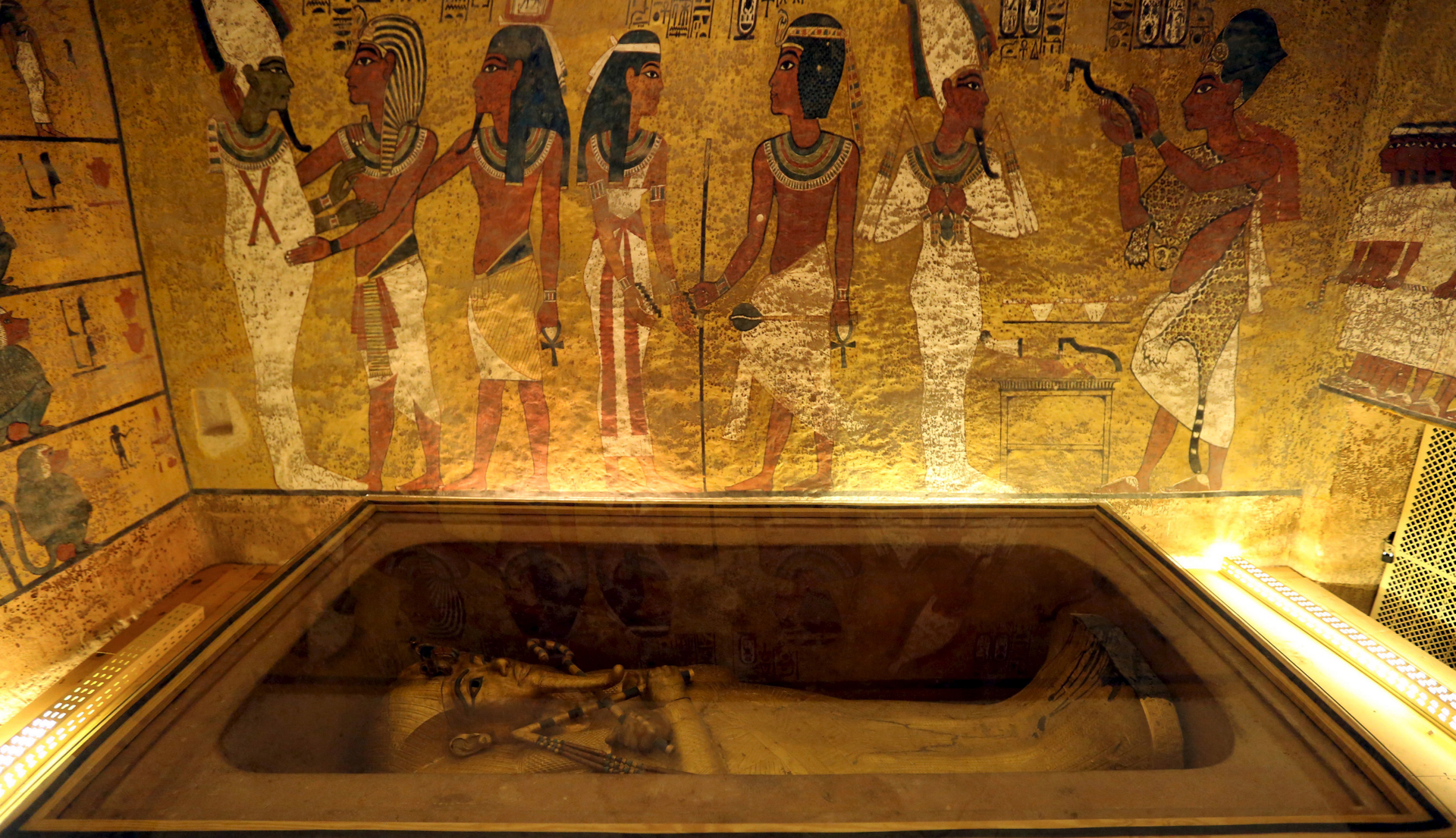Lost and Found: The Incredible Discovery of a Pharaoh's Tomb near Luxor
Background of Luxor and its Archaeological Significance
Overview of Luxor
Luxor, often referred to as the world's greatest open-air museum, is a city that radiates the richness of ancient Egyptian history. Nestled on the east bank of the Nile River, Luxor is renowned for its extraordinary temples, tombs, and monuments that date back thousands of years.
When you stroll through its sun-kissed streets, it’s hard not to feel the echoes of the past. Luxor was once the ancient city of Thebes, the capital of Egypt, at the height of the New Kingdom. This historic hub is home to the magnificent Karnak Temple, which is one of the largest religious complexes ever built. Nearby, you can marvel at the majestic Luxor Temple, beautifully illuminated at night, where pharaohs once worshipped the gods.
The allure of Luxor also lies in the Valley of the Kings, a sprawling necropolis where the tombs of pharaohs, including that of Tutankhamun, have been unearthed. With the silent presence of the mountains framing the city, it’s as if the land holds secrets waiting to be discovered.
History of Archaeological Discoveries in Luxor
The rich tapestry of Luxor's archaeological significance can be traced back to the early 19th century. The fascination with this ancient capital led explorers and archaeologists from around the globe to excavate its treasures. Some key milestones in the history of discoveries include:
- The early expeditions: French scholar Jean-François Champollion, known for deciphering Egyptian hieroglyphs, visited Luxor in the 1820s. His work laid the groundwork for understanding ancient Egyptian inscriptions, making subsequent discoveries more meaningful.
- 19th to 20th century excavations: Following Champollion, numerous expeditions revealed magnificent temples and tombs. The discovery of the tomb of Tutankhamun in 1922 by Howard Carter was a pivotal moment that propelled Luxor into international fame. The wealth of artefacts found within the tomb reignited global interest in ancient Egypt.
- Ongoing excavations: Even today, archaeological work continues to reveal new findings. Recent projects have uncovered additional tombs, shrines, and buried cities, showcasing the enduring significance of Luxor in understanding ancient Egyptian society.
As you explore Luxor, it becomes evident that every stone, every artefact, holds profound stories of a civilization that thrived thousands of years ago. This city isn’t just about seeing ancient sites; it’s about experiencing the essence of a culture that shaped the course of human history.
Luxor isn’t merely a destination; it's a journey into the heart of ancient Egypt, where every moment spent reflects a rich archaeological significance that invites you to delve deeper into its mysteries.

The Unveiling of the Pharaoh's Tomb
As we journey deeper into the captivating stories Luxor holds, one of the most exhilarating chapters certainly belongs to the unearthing of a pharaoh's tomb. This discovery was not just a significant archaeological event; it was a revelation of the grandeur of ancient Egyptian civilization and its burial practices.
Initial Excavation Findings
The reality of unearthing a pharaoh's tomb often exceeds our wildest imaginations. During the initial excavation phases in Luxor, archaeologists were greeted with treasures beyond comprehension. Imagine standing at the threshold of a tomb, the air thick with anticipation as the first few shovels of earth were removed.
- Location: The tomb was discovered in an area rich with history, surrounded by well-known sites like the Valley of the Kings, making its context even more remarkable.
- Initial Findings: As excavation commenced, the team uncovered a series of chambers filled with extraordinary artefacts. They stumbled upon:
- Intricately carved sarcophagi
- Beautifully preserved wall paintings depicting scenes from the afterlife
- An array of funerary items resting in their original positions, such as:
- Gold Jewellery
- Canopic jars, intricately designed for preserving the pharaoh’s organs
- Furniture meant for the afterlife
Each layer of discovery painted a vivid picture of the beliefs and customs of a society that revered its rulers.
Significance of the Discovery
The unearthing of the pharaoh's tomb carried significance that rippled through the realms of archaeology, history, and even popular culture. This was not merely about finding treasures; it was a window into a world that thrived millennia ago.
- Cultural Insights: The discovery provided invaluable insights into ancient Egyptian burial practices. It revealed how pharaohs were honoured in death, reflecting their status in life.
- Impact on Egyptology:
- The artefacts and records found opened new avenues for scholarship, fundamentally altering perceptions of the New Kingdom's cultural richness.
- It sparked a renewed interest in Egyptology, drawing scholars, enthusiasts, and tourists alike to Luxor, eager to delve into the stories surrounding the tomb.
- Public Fascination: Many of us were first introduced to the wonders of ancient Egypt through stories of tomb discoveries. The excitement around the pharaoh's tomb, reminiscent of Howard Carter's initial discoveries, continued to inspire films, literature, and documentaries.
In a broader context, the significance of discovering a pharaoh's tomb extends beyond the artefacts unearthed; it reignites our curiosity and connection to an ancient world, encouraging us to ponder the lives led by those who once roamed the very paths we walk today.
As we reflect on that fateful excavation, we find ourselves standing on the shoulders of giants, tapping into the ancient wisdom and culture that enriches our understanding of humanity's shared past.

Exploration of the Tomb
Following the thrilling discovery of the pharaoh's tomb, one can't help but feel a sense of wonder and anticipation as we delve deeper, exploring not only the architectural layout but also the fascinating artefacts it housed. Each aspect of the tomb holds stories that echo through time, waiting to be told.
Description of the Tomb's Layout
The layout of the tomb is as intriguing as the treasures within it. Imagine stepping into a space that has been confined to the shadows of history for centuries. The meticulous design reflects the sophistication and enduring beliefs of ancient Egyptian culture.
- Entrance and Descending Passage:
- Visitors first encounter a narrow entrance leading to a descending corridor, symbolising the journey into the afterlife. The air gets cooler, and the anticipation builds with every step.
- Main Burial Chamber:
- Upon entering the main burial chamber, one can’t help but be struck by the intricate wall paintings that adorn the space. These vibrant depictions often include scenes from the Book of the Dead, guiding the deceased through the afterlife.
- Side Chambers:
- Adjacent to the burial chamber are several smaller side rooms, perhaps used for storage. These chambers often contained offerings, further demonstrating the Egyptians' belief in provisioning for life beyond death.
The entire layout showcases a thoughtful design intertwined with ritual significance, inviting both archaeologists and visitors to appreciate the craftsmanship and religious beliefs of the time.
Artifacts and Treasures Found Inside
Now, let’s explore the exquisite artefacts that were unearthed within the tomb. Each item tells a unique story, painting a fuller picture of the life and beliefs of the pharaoh.
- Sarcophagus:
- The first striking artefact is the elaborately decorated sarcophagus, often made from high-quality materials like alabaster or granite, adorned with hieroglyphics and gilded details. This was the final resting place for the mummified remains, intended to protect and honour the pharaoh.
- Valuable Artefacts: Among the treasures discovered were:
- Gold jewellery: Intricate necklaces, bracelets, and rings that testify to the pharaoh’s wealth and status.
- Canopic jars: These beautifully designed containers held the pharaoh's internal organs, each jar protected by a deity, ensuring their safe passage into the afterlife.
- Funerary masks: Often made of gold, these masks were engineered to guard against decay and served to identify the deceased in the afterlife.
- Daily Life Items: Artifacts included:
- Tools used in daily life, such as combs and pottery.
- Games and toys reflect the lighter side of life and the desire for enjoyment in the afterlife.
As visitors step into this sacred space, they are met with a tangible connection to a world long gone but not forgotten. Each artefact and the tomb's exquisite layout invite reflection on the sophistication of ancient Egyptian society and its profound understanding of life, death, and the afterlife.
By exploring the tomb and its treasures, we not only unearth the physical remnants of a lost civilization but also connect with the very essence of our shared human experience. The captivating journey through this pharaoh’s tomb inspires curiosity and respect for the rich cultural heritage that continues to intrigue and inform us today.
Historical Insights Gained from the Discovery
With the treasures of the pharaoh’s tomb revealed and the excitement of exploration palpable, we now find ourselves at a crossroads of knowledge that allows us to glean invaluable insights into ancient Egyptian life and beliefs. This discovery did not merely enrich our understanding of a single tomb; it opened the floodgates to broader historical interpretations and explorations within the field of Egyptology.
Understanding Ancient Burial Practices
One of the most profound insights into ancient Egyptian culture comes from their intricate burial practices. The findings within the tomb have allowed researchers to piece together the complexities of how the Egyptians approached death and the afterlife.
- Belief in the Afterlife: The artefacts found within the tomb, including canopic jars and funerary masks, indicate a deep belief in life after death.
- Every item was intentionally placed, showcasing the idea that physical possessions had significance beyond the grave.
- For instance, the presence of everyday items, such as tools and games, highlights the view that life continues in the afterlife, suggesting a continuity that many cultures strive for.
- Mummification process:
- The meticulous mummification process, as evidenced by the preserved remains and adjacent tools speaks volumes about the expertise and ritualistic nature of this practice.
- It emphasised cleanliness and preservation, indicating that the Egyptians believed the body needed to be intact to enjoy the afterlife fully.
- Rituals and Offerings: The findings also spotlight the rituals involved in burial.
- The various offerings left within the tomb, such as food, clothing, and treasure, illustrate how the living sought to ensure comfort and favour from the deceased in their next life.
Understanding these practices gives us a glimpse into the values, fears, and aspirations that shaped ancient Egyptian society.
Contribution to Egyptology
The discovery of the pharaoh's tomb not only enriches our understanding of ancient burial practices but also significantly contributes to the broader field of Egyptology.
- Catalyst for Further Research: The artefacts and knowledge gained have served as a catalyst for further research and exploration in Luxor and beyond.
- Archaeologists and historians are now able to look at other sites with a renewed perspective, often linking practices and findings across different periods and dynasties.
- Interdisciplinary Studies:
- The wealth of information has spurred interdisciplinary studies, combining archaeology, anthropology, and even art history to foster a more robust understanding of ancient Egypt.
- This collaboration allows scholars to connect the dots in ways that were previously unimaginable.
- Cultural Legacy: The tomb’s finding has also sparked global interest in Egyptian history.
- Museums around the world have sought loans of artefacts, and exhibitions have introduced thousands—if not millions—to the marvels of ancient Egypt, keeping the culture alive and relevant in contemporary discussions.
The unearthing of the pharaoh's tomb has illuminated the remarkable complexity of ancient Egyptian civilization. It stands as a testament to their sophisticated beliefs surrounding death and the afterlife while also paving the way for modern scholars to explore and appreciate the far-reaching impacts of this ancient culture.
The legacy of this tomb is one that continues to inspire curiosity and research, inviting each of us to ponder the enduring impact of a civilisation that shaped the course of human history.

Conservation Efforts and Future Research
As we marvel at the incredible journey we've taken through the pharaoh's tomb, it’s essential to pause and consider the future. The treasures and insights gleaned from this site are not only valuable for understanding the past but also must be carefully preserved for future generations. The commitment to conservation and the potential for further discoveries promise to keep the legacy of ancient Egypt alive and thriving.
Preservation of the Tomb and Artifacts
The preservation of the tomb and its artefacts is a monumental task that involves a delicate blend of art, science, and respect for history. Given the fragile nature of many items, various strategies have been employed to ensure their survival.
- Climate Control: One of the primary challenges is maintaining stable environmental conditions.
- Temperature and humidity levels are constantly monitored to prevent deterioration. Advanced climate control systems help mitigate the risks posed by the harsh desert climate.
- Restoration Projects:
- Experts trained in restoration specifically address issues of wear and tear.
- For instance, any artefacts recovered that show signs of deterioration are carefully restored, ensuring that their original significance and detail remain intact.
- Documentation and Research:
- Every artefact discovered undergoes thorough documentation, recording its condition and provenance. This meticulous record-keeping allows for better monitoring of items over time.
- New technologies, such as 3D scanning, further enhance preservation efforts, allowing for digital backups of artefacts.
- Community Involvement: Engaging local communities in preservation efforts helps foster a sense of ownership and accountability. Workshops and educational programmes enlighten residents about the importance of their archaeological heritage.
By focusing on these meticulous conservation efforts, we can ensure that the treasures of the tomb continue to tell their story for future explorers and scholars.
Potential Future Discoveries in the Area
Looking ahead, the possibilities for future discoveries in and around Luxor are nothing short of tantalising. Archaeologists believe that the valley still holds many secrets, and ongoing explorations may yield even greater insights.
- Unexplored Tombs:
- The Valley of the Kings alone has dozens of undiscovered tombs.
- Advanced imaging technologies, such as ground-penetrating radar, are now being employed to identify potential burial sites hidden beneath the earth’s surface.
- Hidden Artefacts:
- As excavations continue, there’s potential to uncover new artefacts that could shed further light on the daily lives of the ancient Egyptians.
- We can envision discovering more items related to trade, daily activities, and even the spiritual lives of those who inhabited this land.
- Cultural Connections:
- Future findings may also strengthen connections to other ancient cultures and societies.
- As trade routes and interactions beyond Egypt are explored, the resulting artefacts and connections may challenge and enrich our current understandings.
This dedication to ongoing research not only deepens our appreciation for ancient Egypt but also offers a bridge to understanding the complexities of human history. Each excavation, each artefact uncovered, has the potential to illuminate another facet of a culture that continues to capture the world's imagination.
In essence, the commitment to preservation and the excitement of potential future discoveries reaffirm the importance of respecting and understanding our shared human heritage, a story that is still being written under the sands of time.
